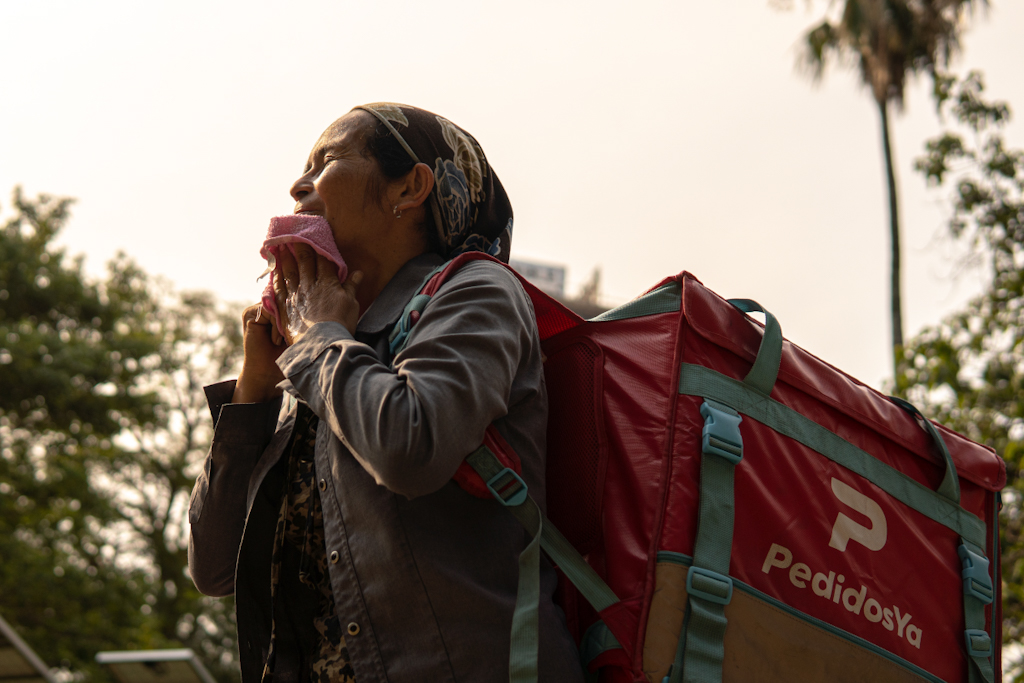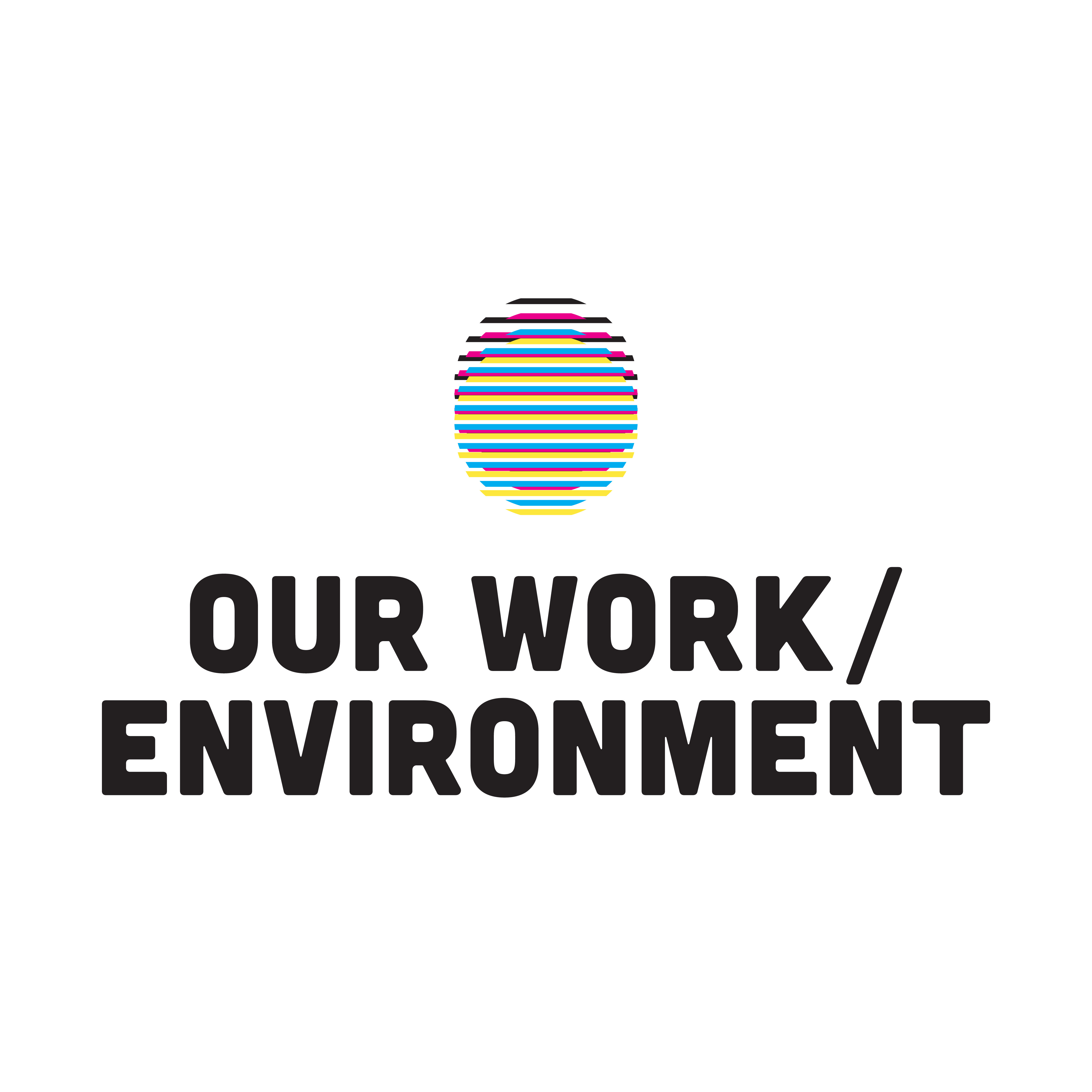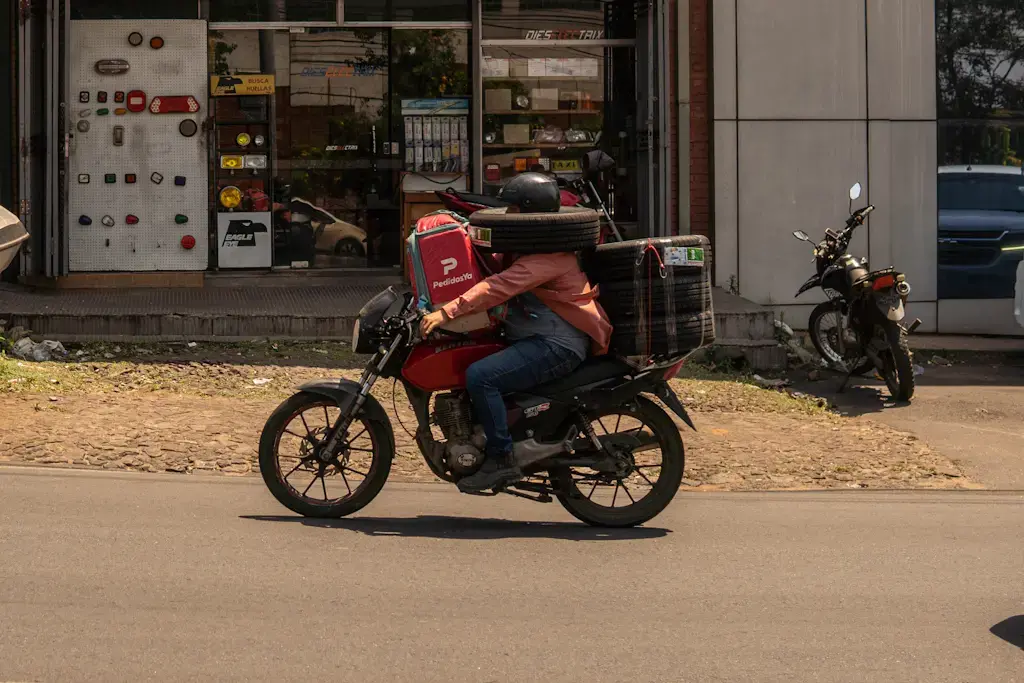
El Surtidor has made the coverage of the climate crisis one of its core editorial missions. To this end, for at least five years, we have dedicated resources and time to specializing in and producing stories that translate this complex phenomenon and capture the attention of audiences in order to mobilize them.
Our Pulitzer Center-supported report “Work at Risk in the Face of Unseasonable Heat” is a case in point, exploring how extreme heat, aggravated by global warming, is already impacting the health, productivity, and safety of delivery drivers in Paraguay. This report combines using accessible technology, working closely with the intended audience’s communities, and collaborating with a leading scientist in the field of heat and labor studies, which was fundamental to the success of the investigation.

As a nonprofit journalism organization, we depend on your support to fund more than 170 reporting projects every year on critical global and local issues. Donate any amount today to become a Pulitzer Center Champion and receive exclusive benefits!
How did the idea come about?
We decided to study the effects of high temperatures on urban workers for two reasons. First, Paraguay has suffered more intense and frequent heat waves in recent years, but few connect this to the climate crisis or imagine how it could worsen in the coming years. Paraguayans experience heat as a natural feature of the territory, even confusing it with national identity. We thought it would be valuable to address this topic because it shows how global warming is already altering and worsening meteorological conditions that seem everyday to us. We sought to challenge the normalization of extreme heat with rigorous and contrasted information.
Second, we decided that the research sources would be motorcyclist delivery drivers because our audience is eminently urban and young, like the delivery workers themselves. We initially considered exploring the situation of farm workers, but discarded this option because there is already more research on their heat risk situation. Approaching another workforce would be a novel contribution.
How did we do the research?
Review of the scientific literature
The team of journalists reviewed the academic literature and relevant reports on the effects of extreme heat at work. In a shared document, each of us added data, quotes, and references useful for the report. This phase was key because it allowed us to become familiar with concepts previously unknown to the team, such as heat stress (when the body loses its ability to regulate its temperature).
In this review we also found projections that helped us to measure the seriousness of the issue, such as an ILO report that estimates the number of jobs that may be lost in the near future due to the impact of extreme temperatures on health. Finally, the exploration allowed us to know in advance measures that can be adopted in the workplace to prevent and mitigate the consequences of heat, something important for us that we sought from the beginning to incorporate a solutions approach to the report.
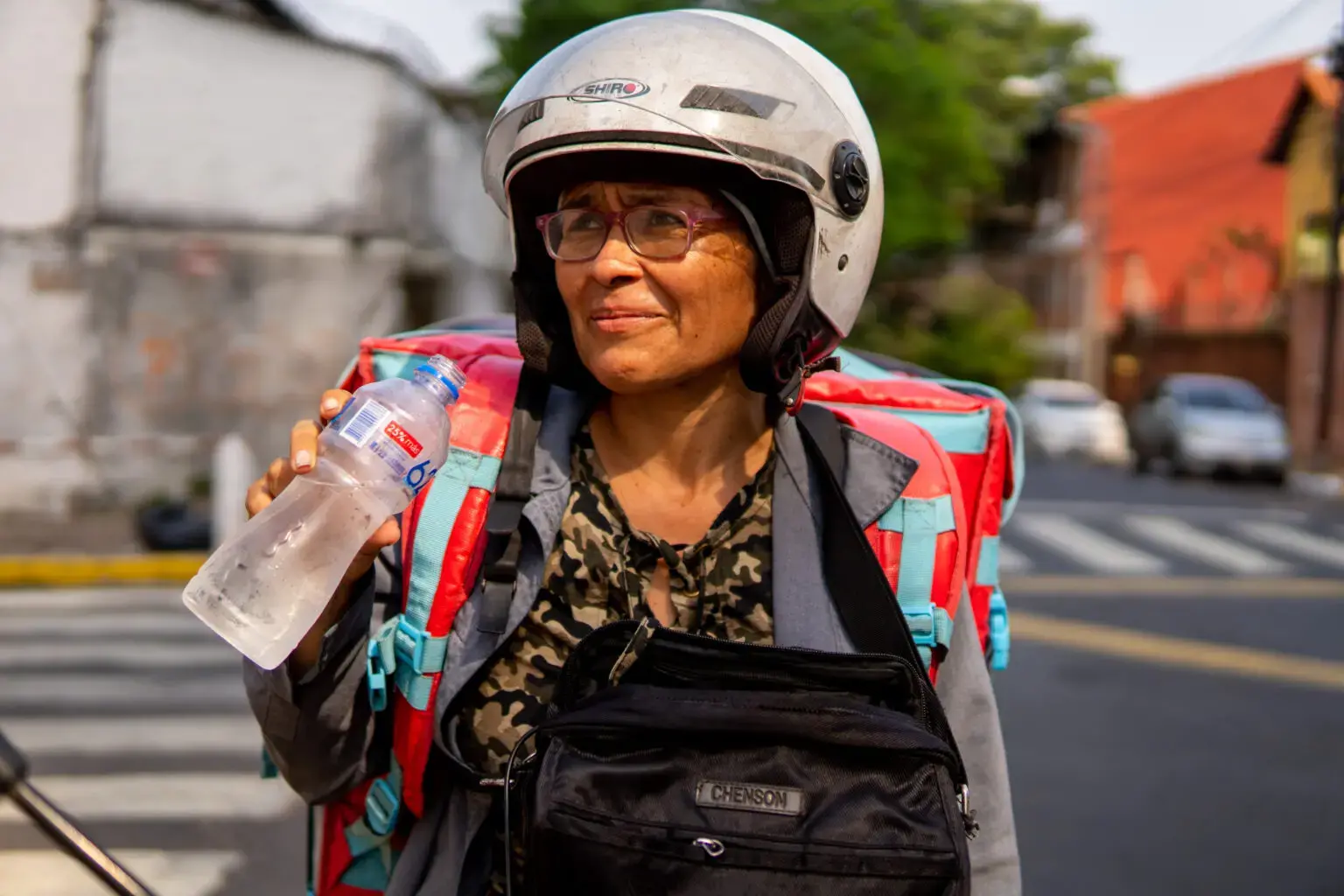
Survey development and interviews with key sources
A decisive aspect for the research was to convince members of the Union of Motorcycle and Related Workers of Paraguay of the importance of the work, because this allowed us to count on them for interviews, a survey, and finally for a measurement of the impact of heat on their bodies. We met with some of them to tell them how the research would be, and they agreed to everything we asked of them because they agreed that high temperatures are a problem and that part of their demands to the companies and the Paraguayan government is access to hydration and resting places in the city. They saw in our research the possibility of having information to support this demand.
Through interviews we collected their testimonies on how they experience the heat on their routes, if they have access to drinking water, and if they report illnesses associated with continuous exposure to heat, among other things. These interviews gave us a good idea of how difficult it is for them to venture into the city with temperatures that sometimes reach 40 degrees Celsius (104 degrees Fahrenheit), with an even higher heat index. We also learned about the precarious conditions in which they carry out their work, without any kind of health protection.
In addition to these interviews, we conducted other interviews with specialists, such as doctors, who gave us details about what happens in the body under the effects of continuous exposure to heat. We also sent questions to authorities of the Ministry of Labor and to employers of delivery drivers to find out what measures are implemented to protect workers in these circumstances.
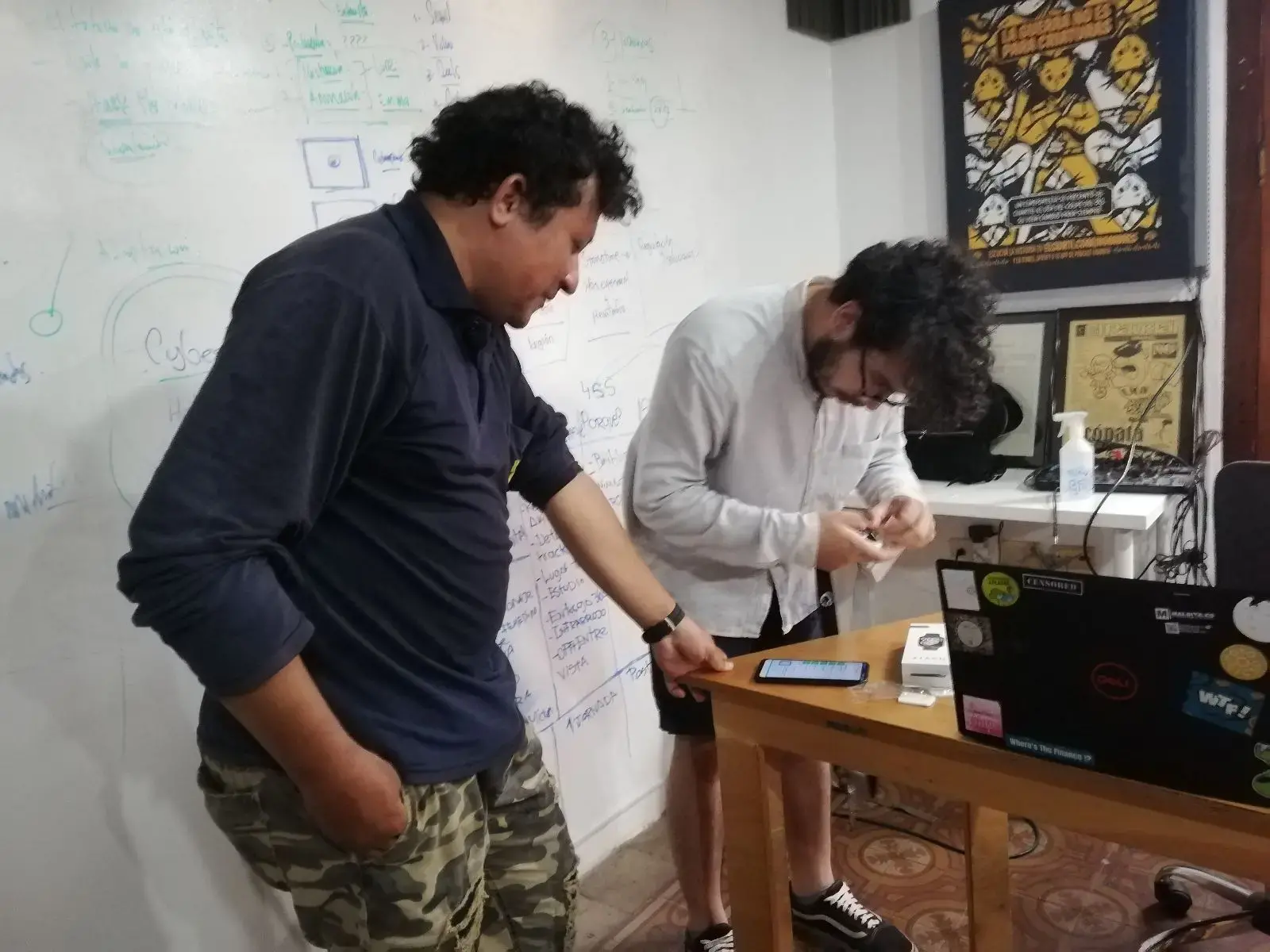
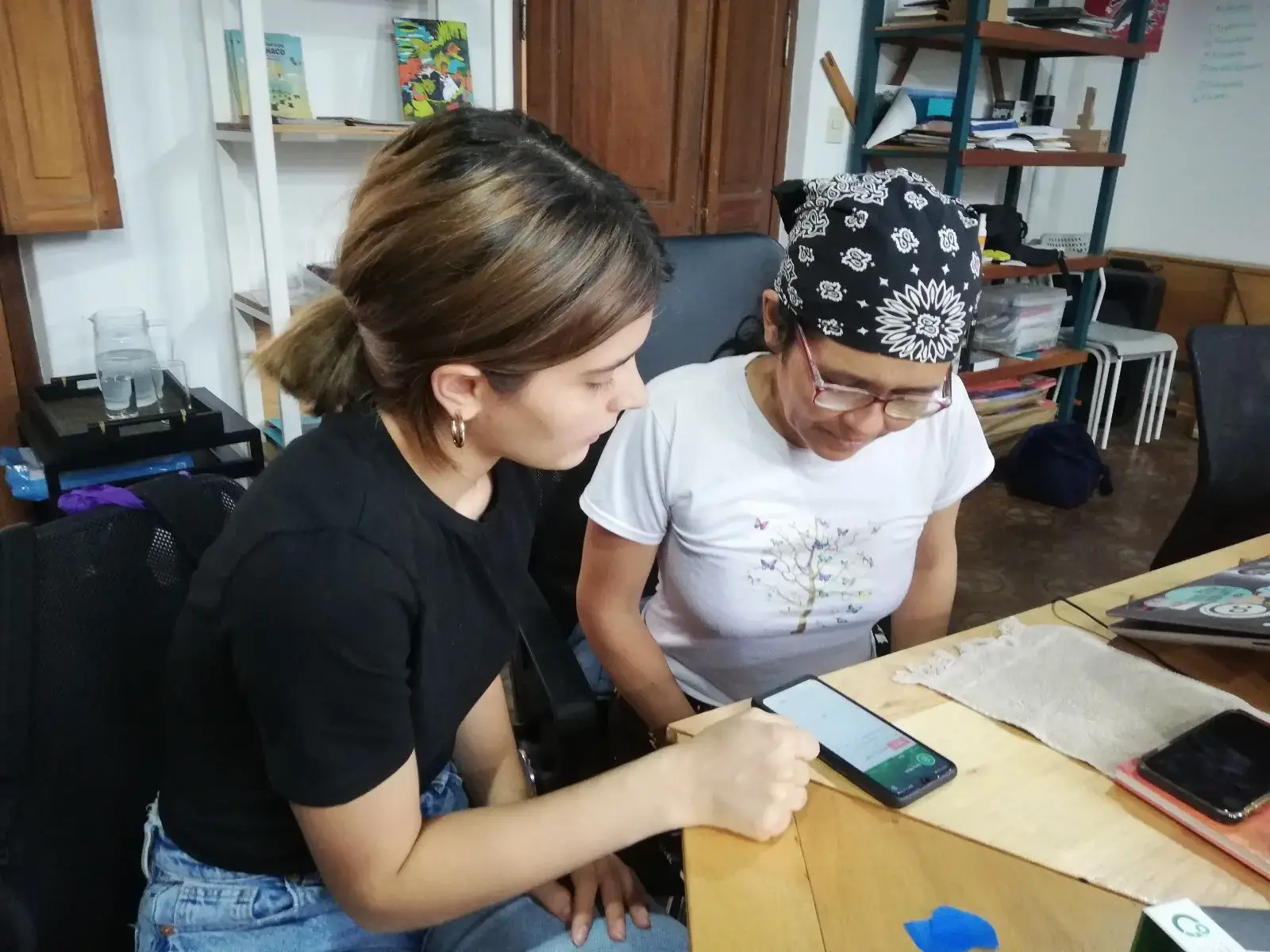
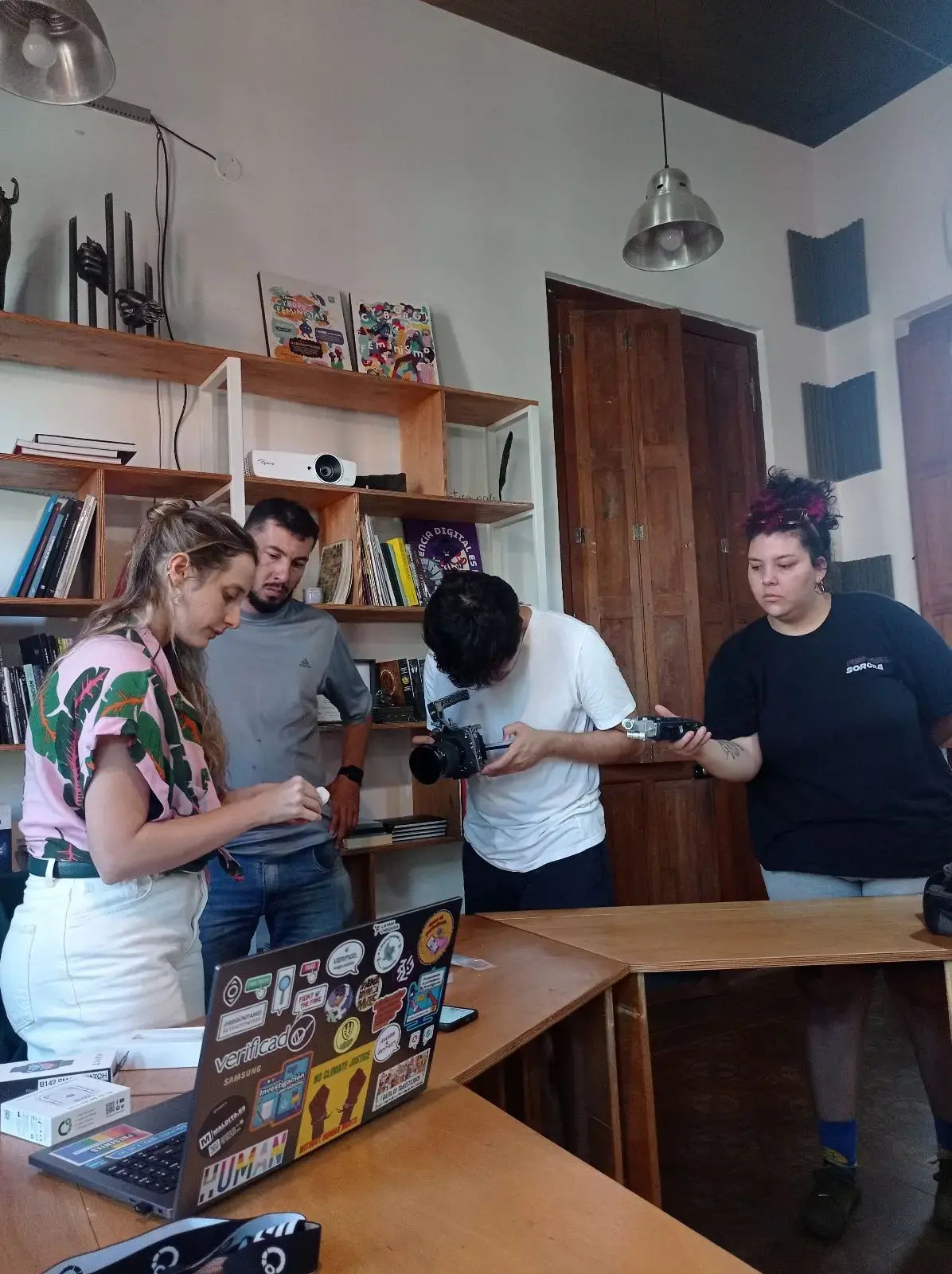
Experiment design and implementation
Between reviewing the scientific literature and conducting in-depth interviews, we had traversed the familiar territory of journalists. But the novelty of this investigation came about thanks to the generous openness of scientist Andreas Flouris, who was interested in our work from the very first email and who guided us on how to actually measure the impact of extreme heat.
Flouris, a professor of physiology at the University of Thessaly in Greece, has done several investigations on occupational heat stress, and he suggested we carry out an experiment with monitors that help to record values that indicate difficulties of the body to regulate its own temperature. These monitors are placed on the torso and are commonly worn by athletes. After a review of different options, we opted for a brand of monitors and purchased them online.
Once we became familiar with the monitors' operating manual, we made a written guide for their application. This guide oriented the reporters who were in charge of summoning the delivery workers, placing the body monitors on them, and collecting the data they produced after their shifts. This data was stored and organized in a database that we created in Airtable.
Undoubtedly, this was the most difficult part of the research. Although it may seem simple, it was not. In the process, we encountered several roadblocks, from the interruption in the data collection of the monitors, especially in the first few runs, to the climatic variability. But we overcame these difficulties through several rounds of data collection.
The second part of the experiment involved calculating the wet bulb temperature, a suggestion by Flouris to reinforce the data collected with the monitors. According to scientists, this calculation is one of the most effective ways of predicting heat-related health risks. We arrived at this measurement with meteorological data, which we requested from the Meteorological Service through a request for access to information. With this information and that of the monitors, we were able to contrast and preliminarily confirm the hypothesis and the testimonies of the delivery workers. Flouris was very helpful in interpreting the results of the experiment and understanding its limitations, which was duly recorded in the report.
Lessons
“Work at Risk in the Face of Unseasonable Heat” leaves us with several lessons.
First, while AI imposes itself as the new cutting edge in journalism, it is possible to do stories with much more accessible technology and innovate in the work.
Second, collaboration between science and journalism is not only possible, it is more necessary than ever. Examples of collaborations that go beyond having scientists as reporting sources are already numerous. Journalists need science to specialize in covering complex issues such as the climate crisis, while the scientific community benefits when journalists use their findings and methodologies to influence public opinion.
Finally, journalists need time and resources to do better coverage. It sounds basic, but in times where "content is king," giving newsrooms space to develop in-depth journalistic projects has become a rarity. However, it is what we need most.

